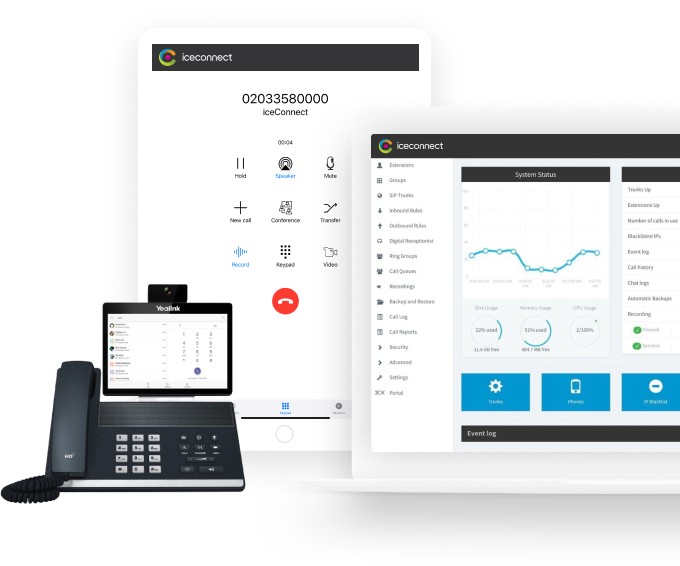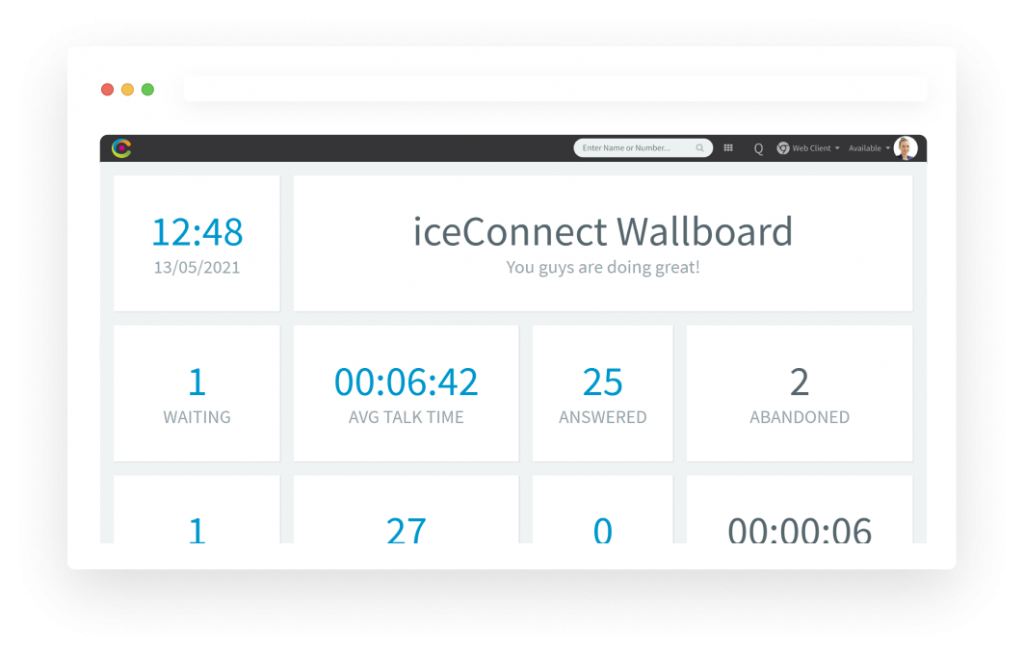Are you struggling to keep up with customer call volume? Are customers getting frustrated with long wait times? Call queue management is an important part of providing outstanding customer service. Optimising your phone operating systems can reduce hold times and improve the overall caller experience. Here are a few tips on how to do just that.
- Understand the basics of call queuing.
- Understand your customer service goals and objectives.
- Evaluate your current call queue management system.
- Implement a new call queue management system that meets your goals and objectives.
- Designing the Perfect IVR (Digital Receptionist) Script
- Train your staff on how to use the new call queue management system.
- Monitor the effectiveness of the new call queue management system and make necessary adjustments.

Understand the Basics of Call Queuing Systems
Call Queueing is a business phone system function that places inbound callers on hold based on pre-determined criteria and then forwards them to a virtual line (queue) when the correct agent becomes available.
It’s almost identical to standing in a line while waiting for assistance, entrance, or your number to be called. On the other hand, a virtual queue may be a far less grating experience for consumers and agents than a physical one if used correctly.
A call queue’s primary goal is to reduce hold time, call transfers, and the number of phone calls or talk time needed to solve a problem. Call queues accomplish this by evaluating input from caller Interactive Voice Response (IVR) systems, following established call routing procedures, and delivering helpful information while consumers wait for an available agent.
Types of Call Queue Systems
There are several types of call queues, which can be classified based on the number of inbound calls they can manage at one time, their capacity for callers on hold, or their ability to route calls to specific agents. The most common types are:
- Single-line call queue: This type of call queue can manage one inbound call at a time. Callers are placed on hold until the first caller hangs up or is transferred to an available agent.
- Multi-line call queue: A multi-line call queue can handle multiple inbound calls simultaneously; calls are typically placed on hold in the order they call in.
- Round robin call queue: Calls are distributed evenly among available agents in a round-robin call queue. This type of call queue is often used in sales environments where each call is important.
- Priority call queue: A priority call queue is used to route calls to specific agents based on a pre-determined priority level. Calls are typically distributed in the order that they are received.
- Time of day call queue: A time of day call queue routes calls to specific agents based on the day. This type of call queue can be used to manage different kinds of customer service inquiries during other times of the day.
Understand Your Customer Service Goals and Objectives
It’s essential to understand your customer service goals and objectives before you can create a compelling call queue system. So why do you need a call queue? What are your customers trying to accomplish when they call? By understanding your goals, you can create a system that works best for your business and meets the expectations of your customers.
Not all customers want to speak to a representative on the phone. Many customers prefer to communicate with businesses through other channels such as email or social media. If you offer multiple customer service channels, make sure your call queue system can accommodate them. Customers should be able to choose the communications channel they want to use, and your queue should route them to the appropriate representative.
Your call queue system should also be customisable. It’s essential to be able to change the order of the queues, the wait time, and other settings as needed. And if something changes – such as a new product or service that you offer – you need to be able to update your system quickly and easily.
The bottom line is that you need to understand your customer service goals to create the perfect call queuing system. By assessing your needs, you can ensure that your system meets your specific requirements and provides a positive experience for your customers.
Evaluate Your Current Phone Operating Systems
There are a few things to think about when choosing your call queue management strategy. while evaluating your call queue management system:
- How well does the system meet your current and future needs?
- Is the system reliable, and does it have the capacity to handle your expected call volume?
- How easy is the system to use?
- What are the costs associated with the system?
- What are the benefits of the system?
Once you have evaluated your current phone operating systems, you can decide if it meets your business’s needs. If it does not meet your requirements, you will need to look for a new system to accommodate your business better. Advanced VoIP systems are an excellent option for businesses that have a high call volume, as they have the capacity to handle a significant number of calls.

Implement a New Call Queue Management System That Meets Your Goals and Objectives
As your business grows, you will likely find that your current call queue management system is no longer adequate. Perhaps it doesn’t scale well, or it just doesn’t have the features you need to correctly funnel customers to the correct destination. In any case, it’s essential to implement a new system that can help you meet your goals and objectives.
There are several factors to consider when choosing a new system. The first is scalability; the system needs to be able to handle increasing call volumes as your business grows. It’s also essential to find a system that is easy to use and configure to get it up and running quickly. And finally, make sure the system has the features you need to provide a high level of customer service.
Once you’ve chosen a system, it’s important to configure it correctly to meet your specific needs. Several settings can be tweaked to optimise the design for your specific business. For example, you may want to set different call priorities or routing rules for different types of calls. Alternatively, you may also want to set up a queuing system that allows customers to wait in line or leave a message.
With the right call queue management system, you can provide your customers with the best possible experience and keep your business running smoothly.
Designing the Perfect IVR (Digital Receptionist) Script
Call queues accomplish this by using call routing rules, checking information from IVR (Interactive Voice Response aka digital receptionist) input, and providing useful information to customers who are on hold. In fact, IVR is such an important part of call queue management that it’s worth taking some time to consider how to configure it for your specific needs.
There are a few key things to keep in mind when configuring your IVR:
- First, you’ll want to make sure that your IVR is easy to use and understand. This means using clear, concise language and providing options that are relevant to your customers’ needs.
- Second, you’ll want to ensure that your IVR is properly integrated with your phone system. This will help to ensure that calls are routed efficiently and that customers are directed to the team member or department as quickly as possible.
- Finally, you’ll want to test your IVR regularly to make sure that it’s functioning properly. This can help to avoid customer frustration and ensure that your call queue is running smoothly.
By following these tips, you can ensure that your IVR is properly configured to help improve your call queue management and provide a better customer experience.
Train Your Staff on How to Use the New Call Queue System
It is essential to optimise the system to provide the best customer service. Staff who are properly trained will be able to handle calls more efficiently and improve customer satisfaction. Call queue management can be tricky, so it is crucial to take the time to learn how the system works and what department deals with specific issues. For example, you can ensure that all customers are directed to the correct department and receive the best service possible. In addition, it is essential to monitor the call queue so that you can make changes as needed. Having a well-optimised call queue management system will help improve customer satisfaction and your bottom line.
Monitor the Effectiveness of the New Call Queue System and Make Necessary Adjustments
It is crucial to monitor the effectiveness of the new call queue management system so that you can make necessary adjustments. There are a few different ways to do this.
First, you can listen in on calls and see how the system is being used. For example, iceConnect has a listen and whisper feature that lets you listen in and speak directly to the call agent without the customer hearing what is being said. This will give you a good insight into how well the system is working and where any improvements need to be made. Second, you can simply talk to customers after they have used the system and get their feedback. This is a great way to get an idea of what customers think about the new system and how it can be improved. Finally, you can monitor the call queue itself and see how long calls are taking. This will help you to see where there are bottlenecks in the system and how they can be fixed. By monitoring the effectiveness of the new call queue management system, you can make sure that it is working well and make necessary adjustments to improve customer satisfaction.
Conclusion: If you’re looking for a new call queue management system that can help you achieve your customer service goals and objectives, contact iceConnect.
If you genuinely want to provide the best possible experience over the phone, you really should consult a reputable telecoms company like iceConnect.
Our team of expert engineers will work with you to find the right VoIP phone system for your business and provide training so your staff can use it effectively. We’ll also monitor the system to make sure it’s meeting your needs and making the desired impact on customer service. Don’t wait – contact us today!





